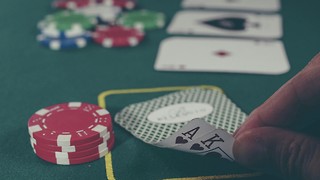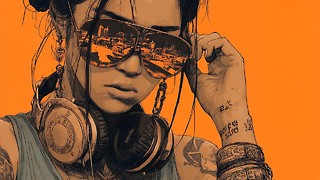David Bowie: 1947-2016
Rhiannon Shaw pays tribute to a musical great
In 2013, the V&A opened their exhibition ‘David Bowie is’ to the public. I was lucky enough to go while it was still in London. When I handed in my ticket and walked into the cavernous room, what surrounded me was an overwhelming spectacle – clothes, posters, records, hand-written lyrics, videos, fan letters, photographs. At first I found the name of the show a bit pretentious, but walking around the hundreds of pieces that made up some small part of his life, some from fifty years apart, you come to realise that no adjective would fit. No life can be easily weighed up and defined by one word, one moment, one outfit – if anyone proved that, it was David Bowie.
David Bowie lived a life so busy, so wild, so full of anecdote and mystery and costume and personality, that it can be rather difficult to pin him down. He was a musician, an actor, an artist, a fashion icon, the husband of a supermodel, the father of an acclaimed director; the son who he’d once, rather spectacularly, christened ‘Zowie Bowie’. He was so peculiarly good at being human while being so utterly ethereal that he might as well have been an alien. Or more accurately, a Starman who had all along been waiting in the sky, coming down to earth with the express intention of blowing our minds.
David Robert Jones was born in Brixton in 1947. From his teens, he devoted himself utterly to a life dominated by art and music. He never missed any opportunity to grow and experiment, especially if it was slightly unusual – he played jazz, took up dance lessons and performed Commedia del’Arte. In an interview in Time Out he proclaimed himself ‘a Buddhist mime songwriter and part-time sax player’, who was ‘trying everything.’
In 1972, glam-rock Bowie bounded onto Top of the Pops wearing a deliciously garish rainbow quilted jumpsuit, his skin snow-white and his dyed red hair spiked up. He appeared in living rooms around the country, looking at once fascinating, devilishly attractive and just plain weird. At that moment, many young people became hooked on this man, who, staring deep into the camera, seemed to be speaking just to them. He wasn’t the artist of their parent’s generation – he sang about drugs, about sexual exploration and counter-culture. Rumours said he ate nothing but chilli peppers and milk, and that he’d been caught in the act with Mick Jagger.
He came to define an androgynous style that questioned gender binaries and encouraged experimentation. The bemused narrator of a prim-and-proper news segment from 1973 describes how David Bowie prepared to ‘meet his public’ before a show by ‘caressing his body with paint’ (applying make-up). When we call Bowie an icon, we must remember that he was originally a symbol of rebellion, of the outcasts. He was up against an establishment that despised any deviation from the norm, especially – shock horror – a man wearing make-up and singing about dancing with men. But Bowie was never one to seek their approval. In 2000 he turned down a CBE, and in 2003 he turned down a knighthood, saying that he seriously didn’t know ‘what it was for’.
There was nothing that Bowie wasn’t afraid of, even in his later years – he could re-define his past, he could contradict himself, he could laugh at himself. He could give a powerful performance as a prisoner of war in Merry Christmas, Mr Lawrence, and then take a turn as a camped-up Goblin King three years later. He had a guest-role in Zoolander and appeared in Extras to pen a song about Ricky Gervais’ ‘pug-nosed face’. He was truly a cool person, by anyone’s standards – someone you’d love to have a really bizarre drink with.
Bowie could capture the mood of the age with acute precision. ‘Space Oddity’ was released just five days before the first men landed on the moon. While news reports showed a man walking on the craterous ground, lines like ‘Planet earth is blue and there’s nothing I can do’ sent the entire world up in a little space capsule, to reveal a strangely small and lonely planet. Bowie saw a generation lost in the space race and sought to make art not just about them, but for them.
He was, and will continue to be, an image of freedom, of possibility, of re-invention: ‘If I’m responsible for people finding more characters within themselves then they thought they had, then I’m pleased, because that’s something I feel strongly about – that one isn’t totally what one has been conditioned to think one is.’
The great thing about a life that you can barely fit into an enormous room at the V&A is that it’s a life that will never stop giving. Everyone at one point goes through a phase loving one artist or musician, but to enter into Bowie’s world is to walk into an elaborate and constantly changing labyrinth.
Come on in: it’s here forever.
 News / Meta opens £12 million lab in Cambridge 11 July 2025
News / Meta opens £12 million lab in Cambridge 11 July 2025 News / Newnham students warned against using ‘secluded or concealed routes’ in evening after student followed16 July 2025
News / Newnham students warned against using ‘secluded or concealed routes’ in evening after student followed16 July 2025 Lifestyle / Reflections on rowing10 July 2025
Lifestyle / Reflections on rowing10 July 2025 News / Write for Varsity this Michaelmas13 July 2025
News / Write for Varsity this Michaelmas13 July 2025 News / University applies for extension to injunction against protesters 15 July 2025
News / University applies for extension to injunction against protesters 15 July 2025








